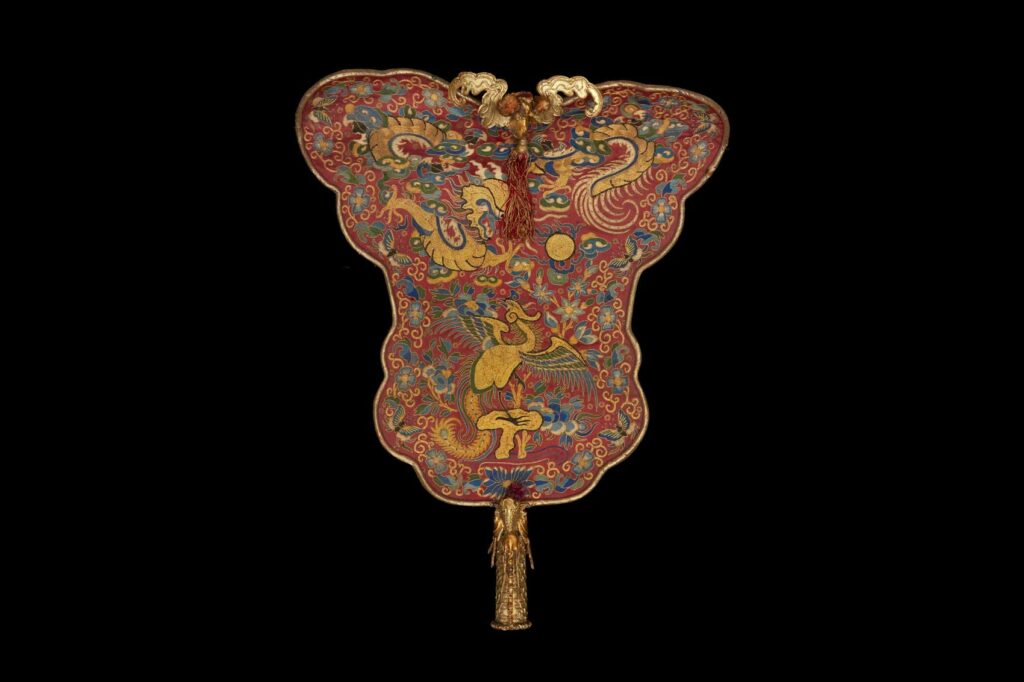
This ornately shaped, Chinese screen fan – also known as a pien-mien (face cover) – dates from the 19th century. It is made of painted silk with a bamboo shaft and a papier mâché handle which takes the form of a dragon.
It is brightly coloured and full of symbolism. The deep crimson background sets off the colours of the snarling Chinese dragon, who is looking down at a long-limbed crane, poised for flight. They are surrounded by exquisite blue flowers, delicate butterflies and decorative golden swirls.
In Chinese culture, the dragon is a symbol of power, strength and good luck. The crane is seen as the prince of all feathered creatures, embodying longevity and peace. Butterflies are a symbol of grace and of immortality.
The screen fan was used from as early as the 5th century in China. They were considered an essential accessory and used by both men and women – especially at the court of the Emperor. While extremely helpful for creating a breeze to cool off, they were also useful for hiding the owner’s face and emotions from view.